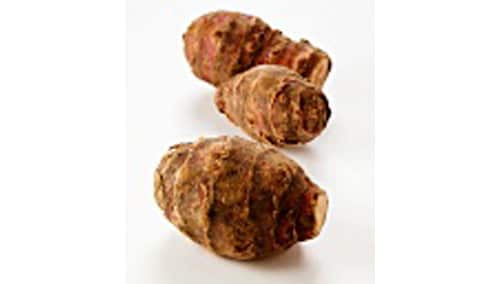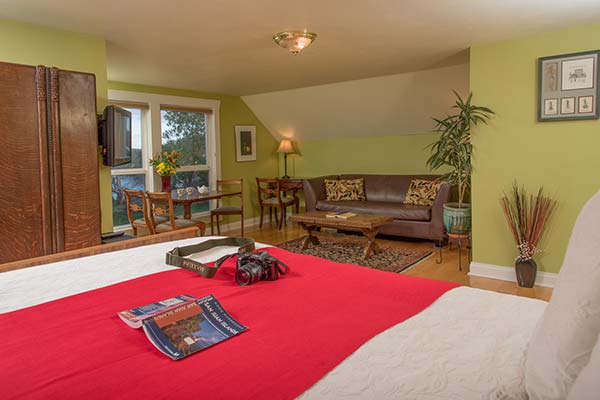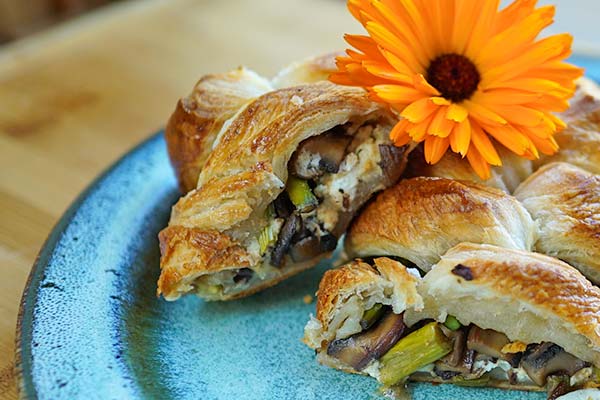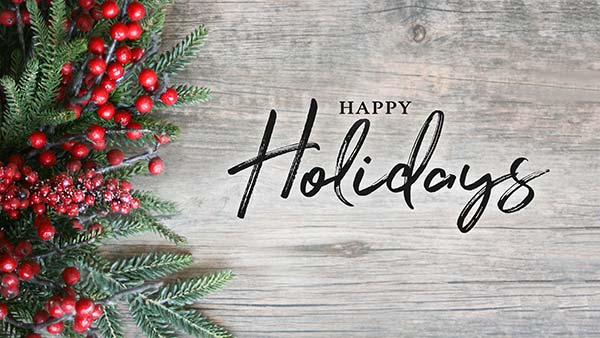They’re known as Jerusalem Artichokes, though some people call them sunroots or sunchokes or earth apples or (as in France) topinambur. Most of us don’t call them anything because we can’t figure out what the heck to do with those gnarly-looking things, so why bother?
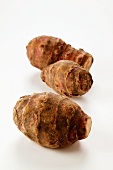 Since they are especially suited for Pacific Northwest climate, two local growers have planted crops, and both have generously contributed information for this post; Biegen’s Farm grows the typical white or lighter colored style and Thornbush Farms grows the more rare red variety. Both farmers were instrumental in organizing the first-ever Sunchoke Cookoff at our local food co-op, which was judged by inn owner Anna Maria de Freitas.
Since they are especially suited for Pacific Northwest climate, two local growers have planted crops, and both have generously contributed information for this post; Biegen’s Farm grows the typical white or lighter colored style and Thornbush Farms grows the more rare red variety. Both farmers were instrumental in organizing the first-ever Sunchoke Cookoff at our local food co-op, which was judged by inn owner Anna Maria de Freitas.
‘The creativity was amazing” she commented. They had sunchokes made into gnocchi, hummus, fried chips, scalloped sunchokes, chowder, and even latkes.
It turns out, the sunchoke is a species of sunflower in the aster family, that is native to the eastern United States. Sir Walter Raleigh found Native Americans cultivating them in 1585. By the time Samuel de Champlain introduced them to Europe in the early 1600s, they were known as the “Canada” or “French” potato. It seems the French really took a liking to them, and improved the tubers for cultivating on a large scale. Indeed, during World Ward II, they were one of the most prevalent vegetables in Europe. Ironically, they are now more extensively cultivated in Europe than in the US, with over 200 varieties available.
Sunchokes are used commercially as fructose and to make alcohol, but their delicate, nut-like flavor and potato-like 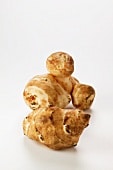 texture makes them a great substitute for potatoes. They can be eaten raw – think thinly sliced in salads – or cooked, and they pair well with onions, cream and spices.
texture makes them a great substitute for potatoes. They can be eaten raw – think thinly sliced in salads – or cooked, and they pair well with onions, cream and spices.
If you find them fresh in farmer’s markets, they’ll keep well in a dark, cold (but not frozen) space. To prepare them, simply scrub them well – no need to peel unless you really want to, in which case it’s easier to cut off all the knobs to a relatively smooth surface, then use a peeler.
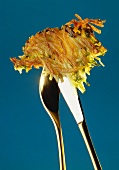 However you use potatoes, you can do the same with Jerusalem artichokes – boil, steam, fry, microwave, braise. Just remember that they cook faster than potatoes and will quickly turn to mush if you aren’t careful. Also, note that they will darken quicker than potatoes when exposed to air, so if serving them raw, use the old lemon juice in water trick (1 Tablespoon acid such as lemon juice, vinegar, or cream of tartar to 1 quart of water) to soak them until ready to serve. These acids will give the chokes a bit tougher texture, so if you’re cooking them, add the acid during the last few minutes. Try using them mashed as a thickener for soups and stews; substitute them for recipes calling for turnips, rutabagas, parsnips, potatoes. Let your creativity run wild!
However you use potatoes, you can do the same with Jerusalem artichokes – boil, steam, fry, microwave, braise. Just remember that they cook faster than potatoes and will quickly turn to mush if you aren’t careful. Also, note that they will darken quicker than potatoes when exposed to air, so if serving them raw, use the old lemon juice in water trick (1 Tablespoon acid such as lemon juice, vinegar, or cream of tartar to 1 quart of water) to soak them until ready to serve. These acids will give the chokes a bit tougher texture, so if you’re cooking them, add the acid during the last few minutes. Try using them mashed as a thickener for soups and stews; substitute them for recipes calling for turnips, rutabagas, parsnips, potatoes. Let your creativity run wild!
Here’s one of the recipes from the Jerusalem Artichoke cook-off, just to get you started. For another recipe from our new breakfast chef, check out our Tucker House blog.
Sunchoke Hummus
1½ pounds Island-grown sunchokes
3 cloves Island-grown garlic
3 Tablespoons Lemon juice
4 Tablespoons Extra virgin olive oil
2-3 Tablespoons Canned green chilies to taste
Salt to taste
1. Scrub but do not peel the sunchokes.
2. Cut large tubers to match small tubers in size.
3. Boil sunchokes in 2 quarts of water for 12 minutes or until soft.
4. Puree sun chokes, garlic, lemon juice, olive oil in a blender or food processor until creamy, adding chilies and salt to taste.
5. Serve with corn chips or pita bread.
Source: Courtesy of Thornbush Farm, Friday Harbor, WA 98250

